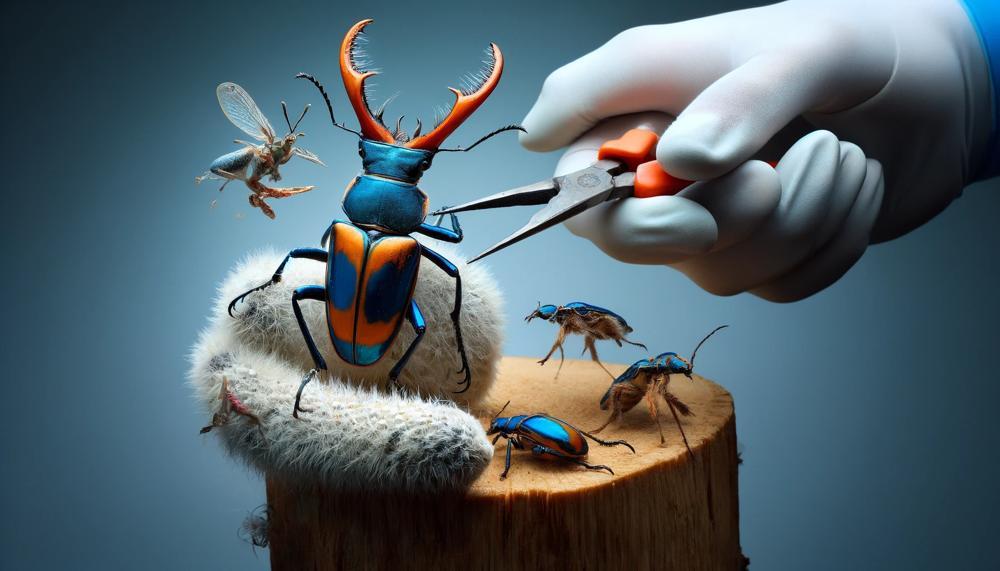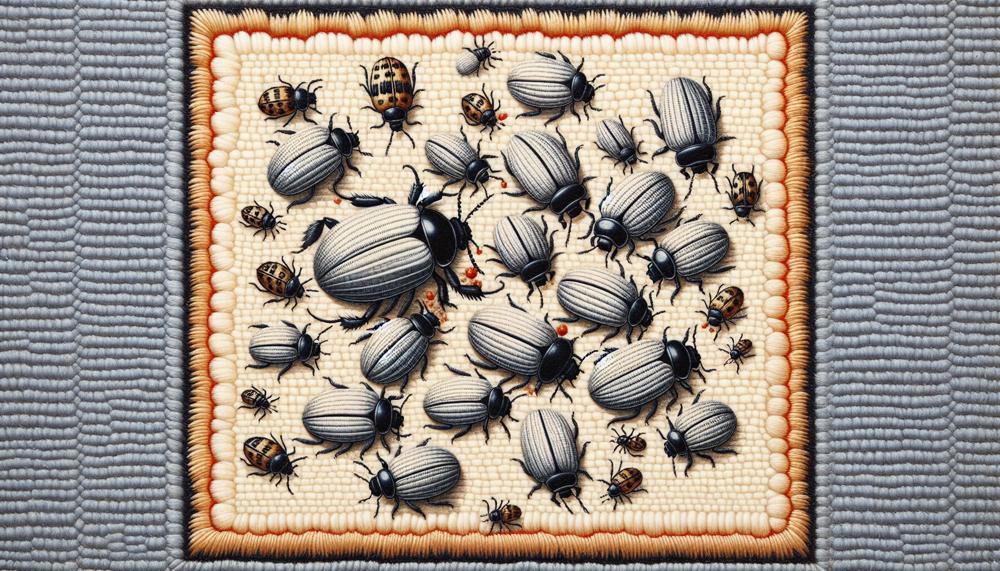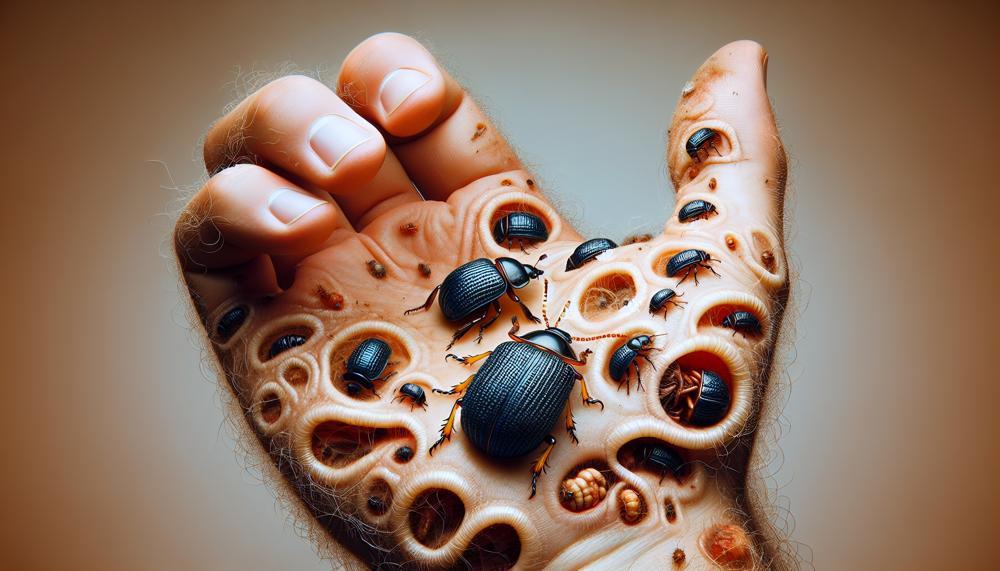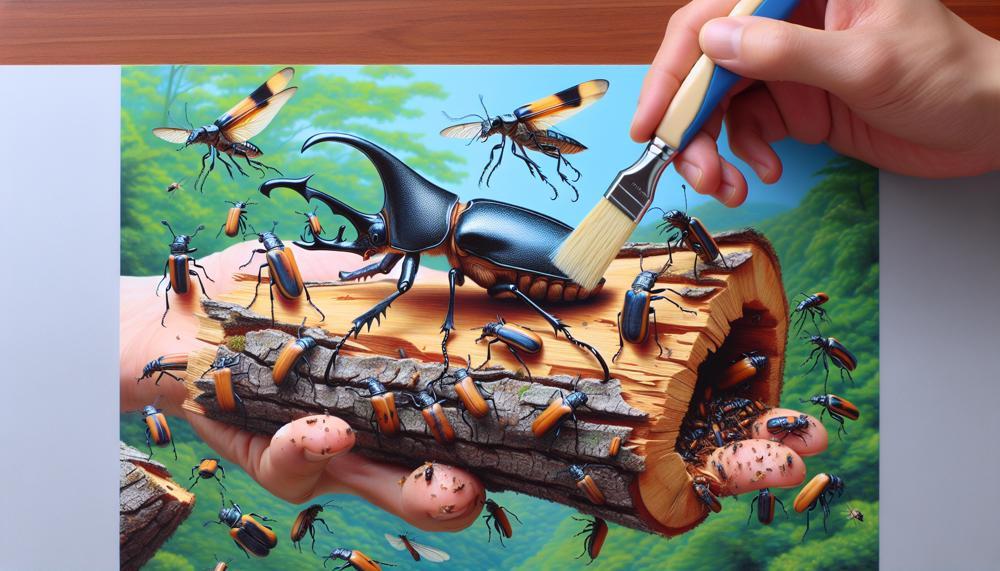When it comes to bugs, blister beetles stand out because of their bright colors and ability to bother and even hurt people. People often mistake these bugs for their related species, fireflies. They have a strong chemical defense system that can cause painful skin burns. They can be a big problem in parks, farms, and even our own houses, and they can be harmful to our health.
Blister bugs pose more risks than simply irritating the skin. They are also dangerous to our furry friends because their poisons can kill them if they eat them. Not only that, but blister beetles can do a lot of damage to our valuable plants by eating their leaves and flowers.
This blog post discusses natural ways to get rid of blister bugs because it understands that people want solutions that work but are also safe. Instead of using harmful chemicals that are bad for our health and the environment, we’ll look at a number of natural ways to keep these annoying bugs away.
So, how to get rid of blister beetles naturally?
Here are some natural methods to get rid of blister beetles:
- Manual Removal: You can manually clear the beetles by picking them out of your garden. Make sure to wear good gloves to protect your skin in case you touch them directly.
- Diatomaceous Earth: One of the most common products used is diatomaceous earth (DT). Sprinkle it over and around your plants to kill blister beetles that are already feeding on your plants.
- Oyster Shell Lime: You can also use oyster shell lime to repel the blister beetles.
- Clean Up Your Yard: Regularly cleaning up your yard can help control the beetle population.
- Install Floating Row Covers: These can protect your plants from blister beetles.
- Use Greenhouses: Storing your plants in greenhouses can keep blister beetles away.
- Avoid Planting Pigweed: Blister beetles are attracted to pigweed, so avoiding planting it can help keep them away.
- Birds: Birds are natural predators of blister beetles.
- Control Grasshoppers: Controlling grasshoppers, their eggs, and larvae in your garden can help, as blister beetles are attracted to areas with grasshoppers.
- Use Calendulas or Pigweeds as Trap Crops: Some gardeners grow calendulas or let a few pigweeds grow when weeding to serve as blister beetle magnets.
Table of Contents
- 1 Natural Remedies for Effective Blister Beetle Control
- 2 DIY Solutions: Creating Homemade Repellents and Traps
- 3 Utilizing Beneficial Insects for Natural Pest Management
- 4 Maintaining a Clean and Pest-Free Environment
- 5 Implementing Physical Barriers for Blister Beetle Prevention
- 6 Safeguarding Pets and Livestock from Blister Beetle Encounters
- 7 Conclusion
Natural Remedies for Effective Blister Beetle Control
| Natural Ingredients/Methods | Effectiveness | Application |
|---|---|---|
| Neem Oil | Repellent and insecticidal properties | Dilute with water and spray on plants, repeat every 5-7 days |
| Diatomaceous Earth | Dehydrates and kills beetles | Sprinkle around plants and entry points, reapply after rain |
| Garlic Spray | Repellent and insecticidal properties | Blend garlic with water, strain, and spray on plants |
| Companion Planting | Repellent properties | Plant marigolds, nasturtiums, or mint near susceptible plants |
| Handpicking | Direct control | Pick beetles off plants and drop them in soapy water |
| Physical Barriers | Prevent entry | Use screens or row covers to protect plants |
DIY Solutions: Creating Homemade Repellents and Traps
- 2 cups water
- 10 garlic cloves, crushed
- 1 tablespoon cayenne pepper
- 1 teaspoon liquid dish soap
- Combine all ingredients in a blender and blend until smooth.
- Strain the mixture into a spray bottle.
- Spray plants and soil around the base of plants to repel blister beetles.
- 1 cup water
- 1 tablespoon neem oil
- 1 teaspoon liquid dish soap
- Combine all ingredients in a spray bottle and shake well.
- Spray plants and soil around the base of plants to repel blister beetles.
| Repellent | Ingredients | How to Use |
|---|---|---|
| Garlic Spray | ||
| Neem Oil Spray | ||
| Diatomaceous Earth Dust |
|
|
| Sticky Traps |
|
|
Utilizing Beneficial Insects for Natural Pest Management
| Beneficial Insect | Role in Blister Beetle Control |
|---|---|
| Ladybugs | Ladybugs feed on blister beetle eggs and larvae, reducing their population. |
| Lacewings | Lacewings lay their eggs on or near blister beetle eggs, and the hatching lacewing larvae feed on the blister beetle eggs. |
| Ground beetles | Ground beetles hunt and eat blister beetle eggs and larvae, helping to keep their population in check. |
| Tachinid flies | Tachinid flies lay their eggs on blister beetles, and the hatching fly larvae feed on the blister beetles, eventually killing them. |
| Wasps | Wasps prey on blister beetles, helping to reduce their population. |
| Birds | Birds, such as chickens and guinea fowl, eat blister beetles, helping to keep their population in check. |
Maintaining a Clean and Pest-Free Environment
| Cleanliness Measure | Effectiveness | Reasoning |
| Regularly sweep and vacuum floors, especially near doors and windows. | High | Blister beetles are attracted to dust and debris, which can provide them with shelter and food. |
| Wipe down surfaces, including window sills, countertops, and tables. | High | Blister beetles can leave behind pheromones that attract other beetles, so it’s important to clean up any spills or residue. |
| Declutter your home and remove any unnecessary items. | Moderate | Clutter can provide hiding places for blister beetles, making it more difficult to control an infestation. |
| Store food in airtight containers. | High | Blister beetles are attracted to the smell of food, so it’s important to keep food sealed up tight. |
| Dispose of garbage promptly and properly. | High | Garbage can attract blister beetles, so it’s important to take it out regularly and keep it in a covered container. |
| Repair any cracks or holes in your home’s exterior. | High | Blister beetles can enter your home through even small cracks or holes, so it’s important to seal them up. |
| Keep your lawn and garden free of weeds and debris. | Moderate | Weeds and debris can provide hiding places for blister beetles, so it’s important to keep your yard clean. |
Implementing Physical Barriers for Blister Beetle Prevention
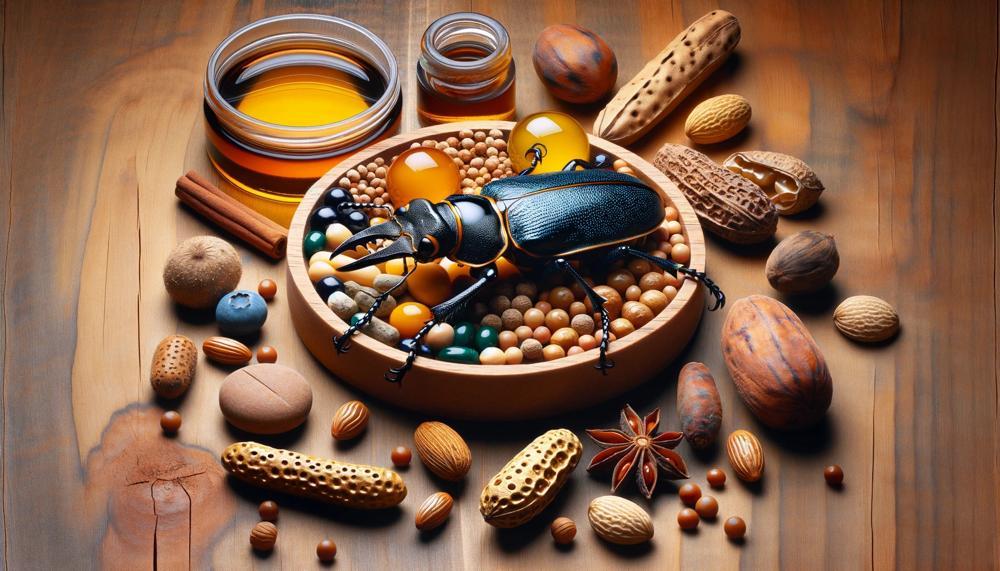
| Physical Barriers | Effectiveness | Ease of Implementation | Cost |
|---|---|---|---|
| Window Screens | Highly effective in keeping blister beetles out of homes | Easy to install and remove | Inexpensive |
| Door Sweeps | Effective in preventing blister beetles from crawling under doors | Easy to install | Inexpensive |
| Caulk | Effective in sealing cracks and crevices where blister beetles can enter | Requires some skill to apply | Inexpensive |
| Weatherstripping | Effective in sealing gaps around doors and windows | Easy to install | Inexpensive |
| Fly Swatters | Effective in swatting away blister beetles that have already entered a home or garden | Easy to use | Inexpensive |
Safeguarding Pets and Livestock from Blister Beetle Encounters
| Strategy | Description |
|---|---|
| Confine Pets Indoors | Keep pets, especially dogs, indoors during blister beetle season to minimize exposure. |
| Inspect Hay and Feed | Before offering hay or feed to livestock, inspect it thoroughly for blister beetles and remove any found. |
| Avoid Beetle-Prone Areas | Keep livestock away from areas where blister beetles are known to congregate, such as weedy fields or gardens. |
| Use Protective Clothing | When handling livestock or working in areas where blister beetles may be present, wear protective clothing, including long sleeves, pants, gloves, and a hat. |
| Provide Shade and Water | Ensure livestock have access to shaded areas and fresh water to help them avoid overheating and dehydration, which can make them more susceptible to blister beetle poisoning. |
| Monitor Livestock Closely | Regularly inspect livestock for signs of blister beetle poisoning, such as excessive salivation, vomiting, or diarrhea. |
| Seek Veterinary Care | If you suspect your pet or livestock has come into contact with blister beetles, seek veterinary attention immediately. |
Conclusion
In the fight against blister bugs, nature has a lot to give. Our fields and houses can be free of these unwanted guests without using harsh poisons.
Neem oil, diatomaceous earth, and helpful insects are just a few of the natural ways to do this. Nature has a lot of powerful weapons that you can use to protect your yard from blister beetles.
With these natural treatments and safety measures, you can turn your outdoor oasis into a peaceful place where you and your family can enjoy nature’s beauty without being bothered by these pesky invaders.

